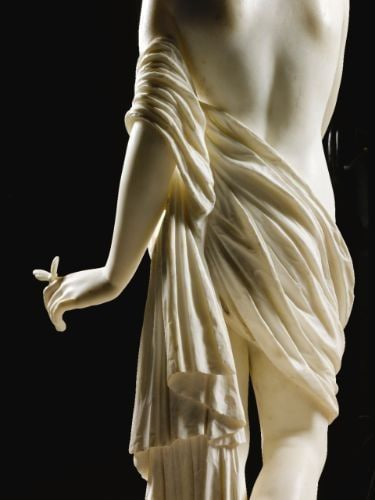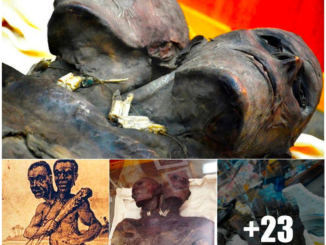In the pantheon of remarkable sculptors of the 19th century, Pio Fedi stands out for his ability to imbue marble with a life-like quality that transcends the boundaries of the medium. His works, characterized by intricate details and dynamic forms, capture the emotional depth and fluidity of the human figure, much like the sculpture depicted in the accompanying image.

Pio Fedi, an Italian sculptor, was renowned for his dedication to the Neo-Classical style, which is evident in the delicate rendering of the drapery and the poised gesture of the figure shown in the photo. This particular sculpture exemplifies Fedi’s mastery in sculpting marble to resemble soft, sheer fabric, a technique that requires exceptional skill and precision. The way the light plays across the folds of the garment highlights the physical and tactile qualities of the material, creating a sense of movement and softness that is almost paradoxical in a solid form.
Born in Florence in the early 19th century, Fedi was a product of the prolific artistic environment that defined the city during this period. He studied at the prestigious Academy of Fine Arts in Florence, where he was deeply influenced by the Renaissance masters. However, it was his unique approach to modern themes infused with classical techniques that marked his works as distinctive.

One of Fedi’s most famous works is “The Rape of Polyxena,” a sculpture that resides in the Loggia dei Lanzi in Florence. The piece, not unlike the one shown in the image, demonstrates Fedi’s ability to capture dramatic tension and emotional intensity. It depicts a moment of action and vulnerability with such fidelity that viewers can almost perceive the emotions rippling through the characters’ sinews.
The sculpture shown in the photograph, while not as widely recognized as “The Rape of Polyxena,” carries the hallmarks of Fedi’s style — the realism of human anatomy, the fluidity of the drapes, and the attention to detail. Every fold of the cloth, every contour of the body speaks of a narrative that Fedi skillfully crafts, inviting the viewer to not only admire the technical prowess but also to engage with the underlying story.

Pio Fedi’s work remains significant today not only for its aesthetic appeal but also for its historical value in the context of art history. His sculptures serve as a bridge between the classical traditions of the Renaissance and the evolving styles of the modern era. They reflect the ongoing dialogue between past and present, making them enduring subjects of study and appreciation.
In museums and galleries, Fedi’s sculptures continue to draw admirers, their timeless beauty and complex craftsmanship resonating with new generations of art lovers and critics alike. The piece depicted in the photograph is a testament to Fedi’s enduring legacy as a sculptor who could make marble speak, breathe, and tell stories just as vividly as any painting or poem.


